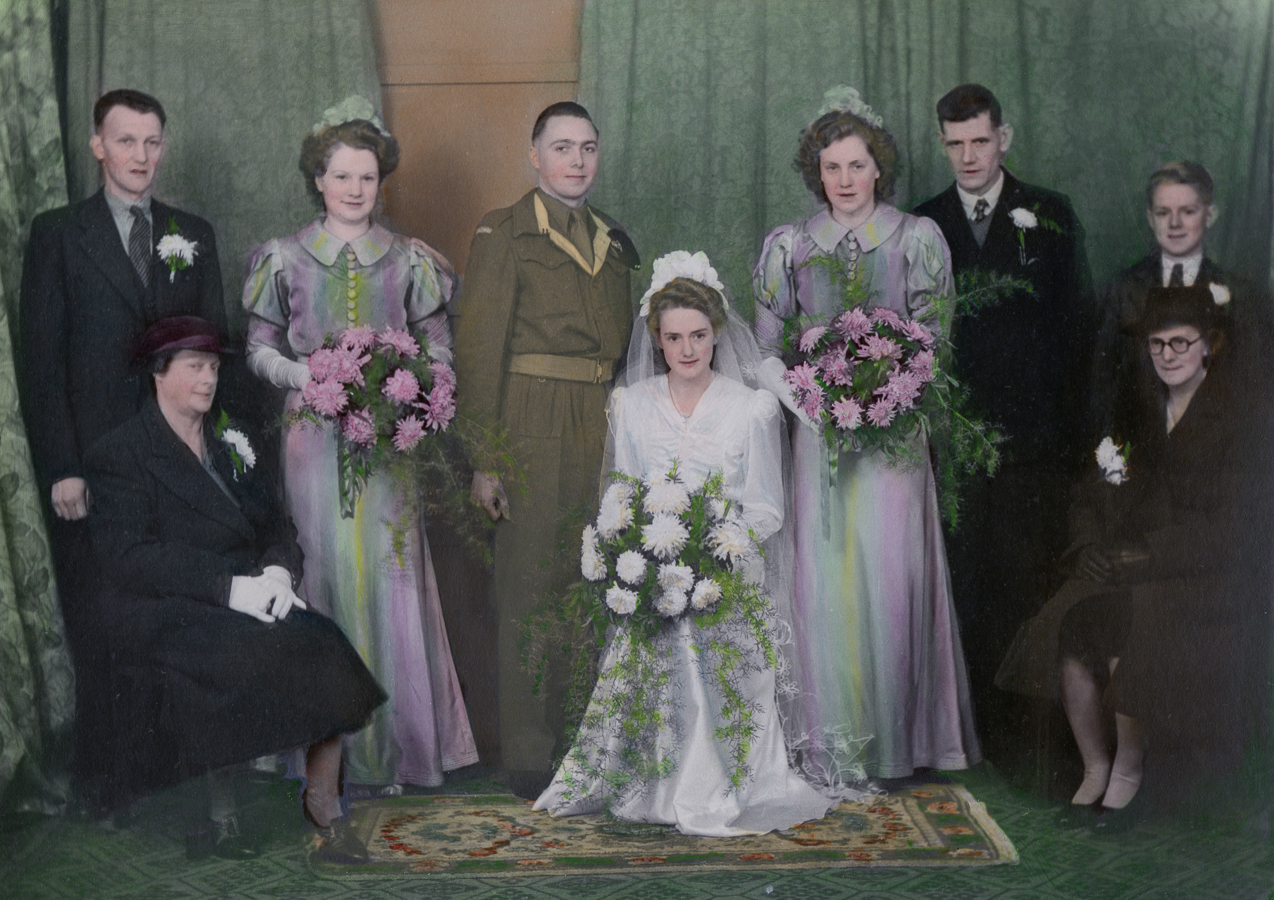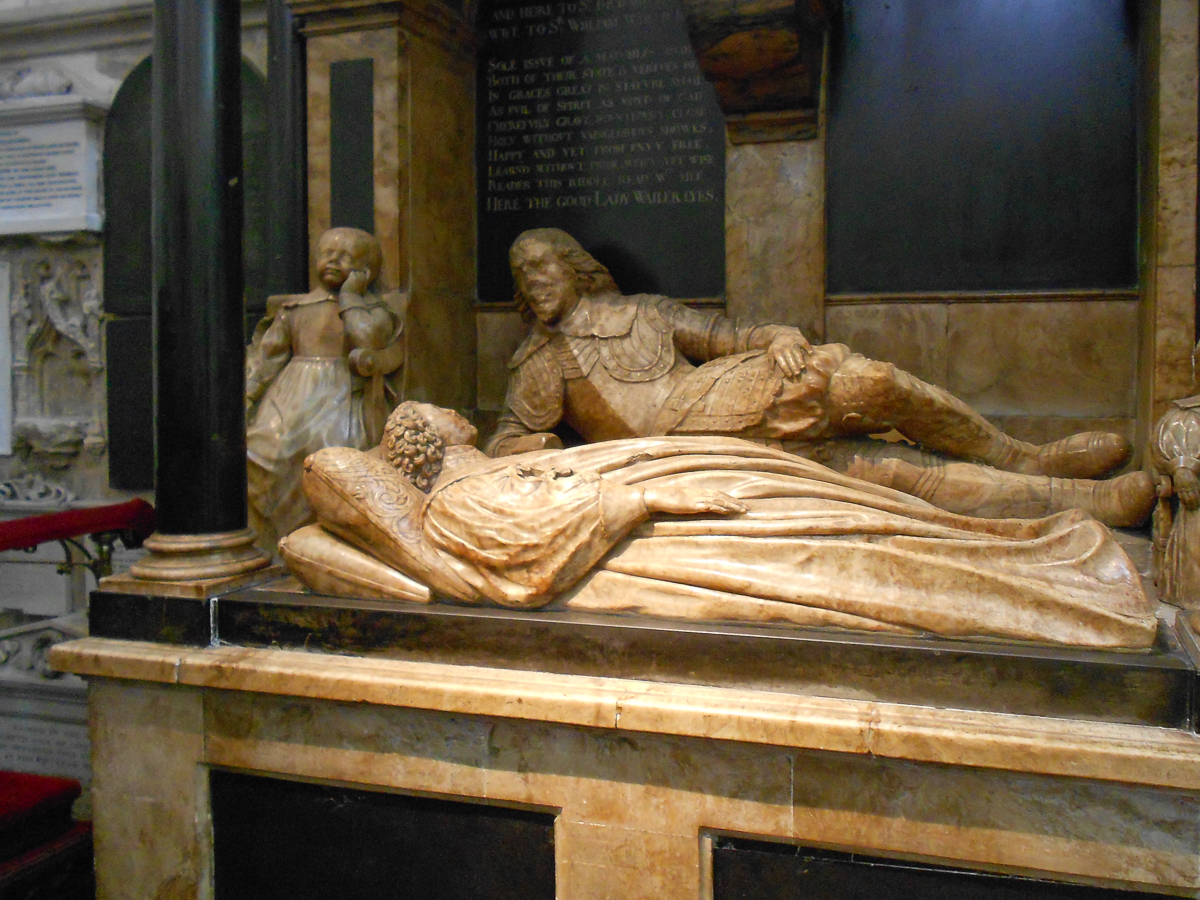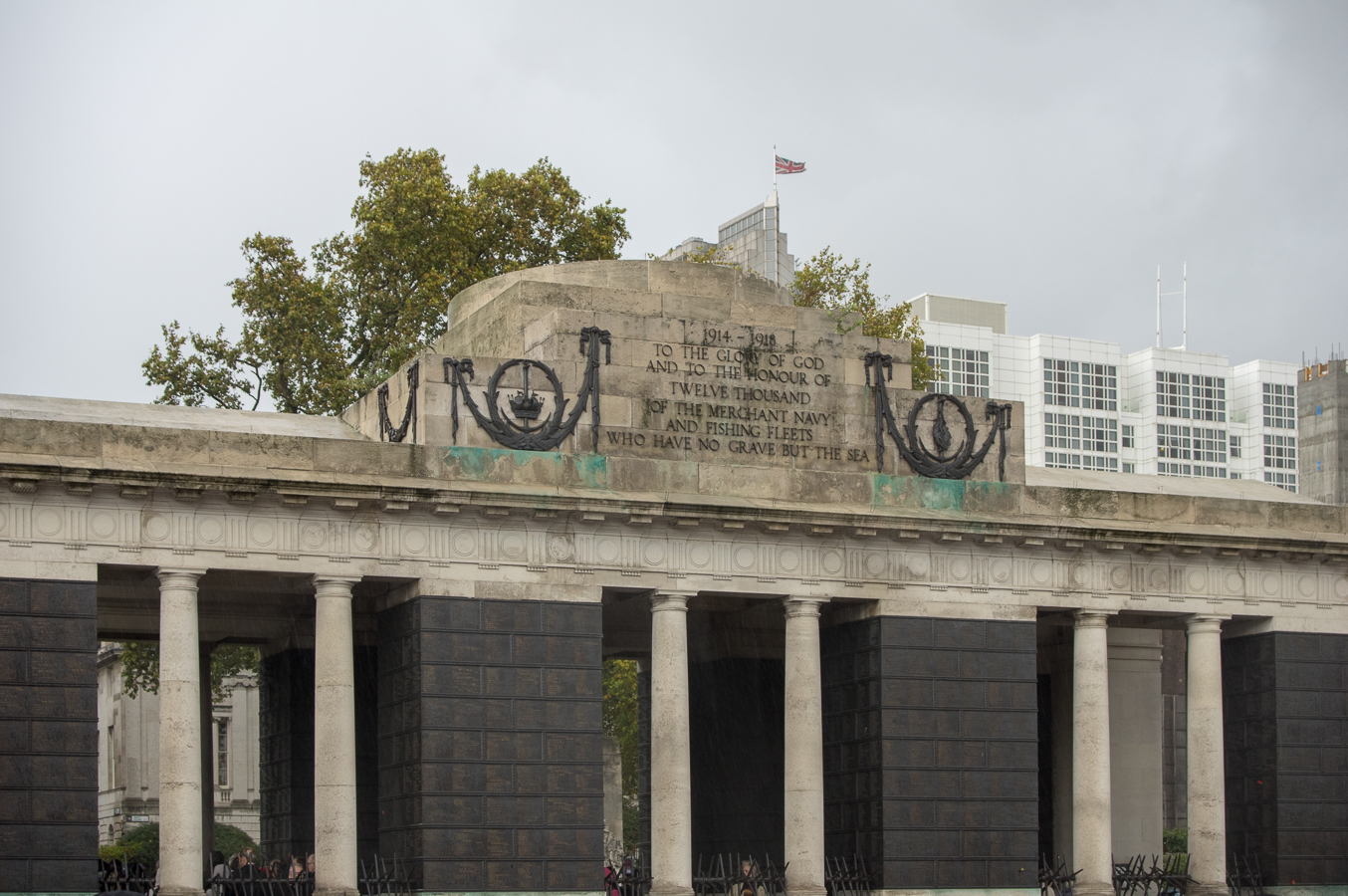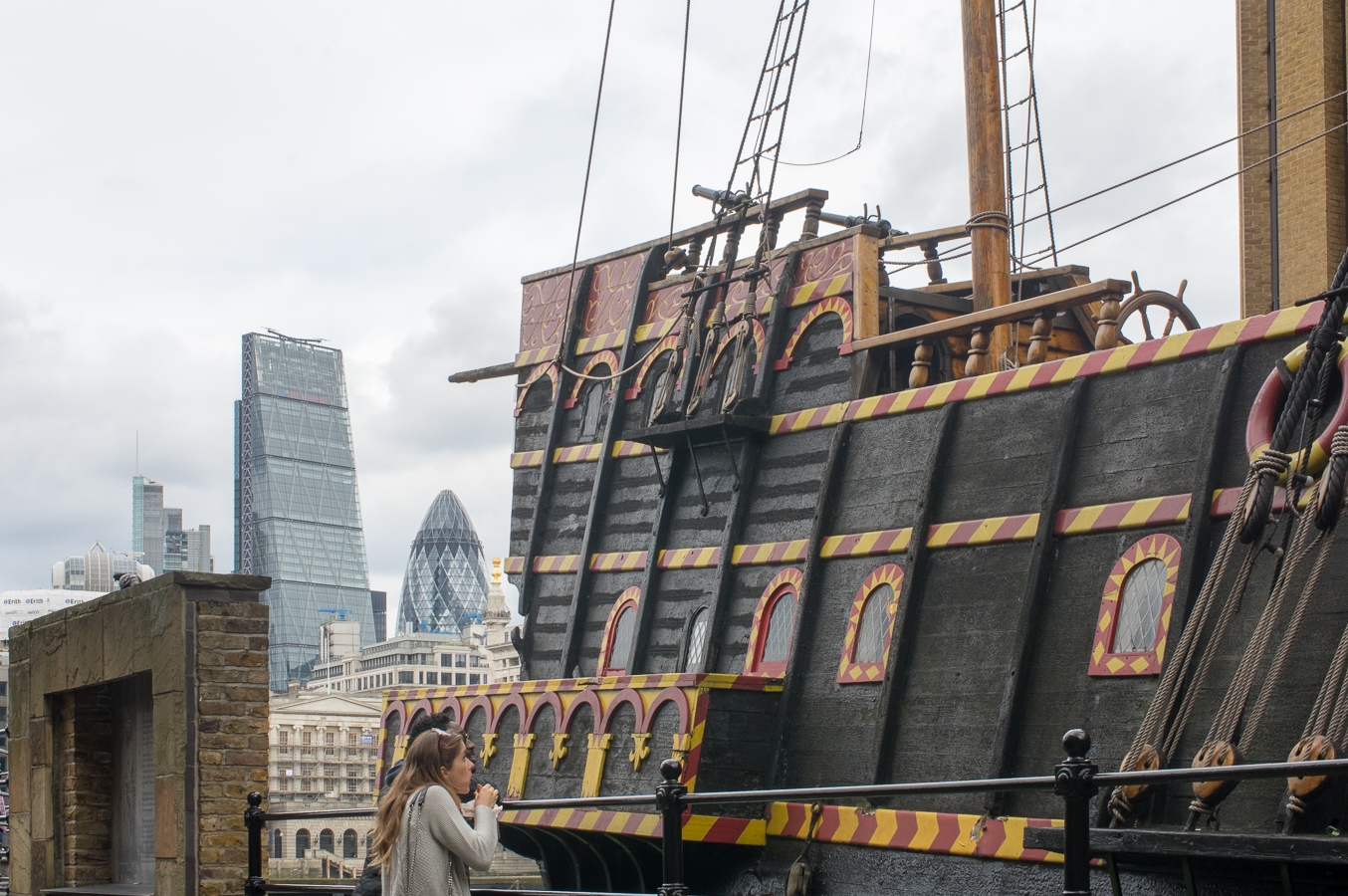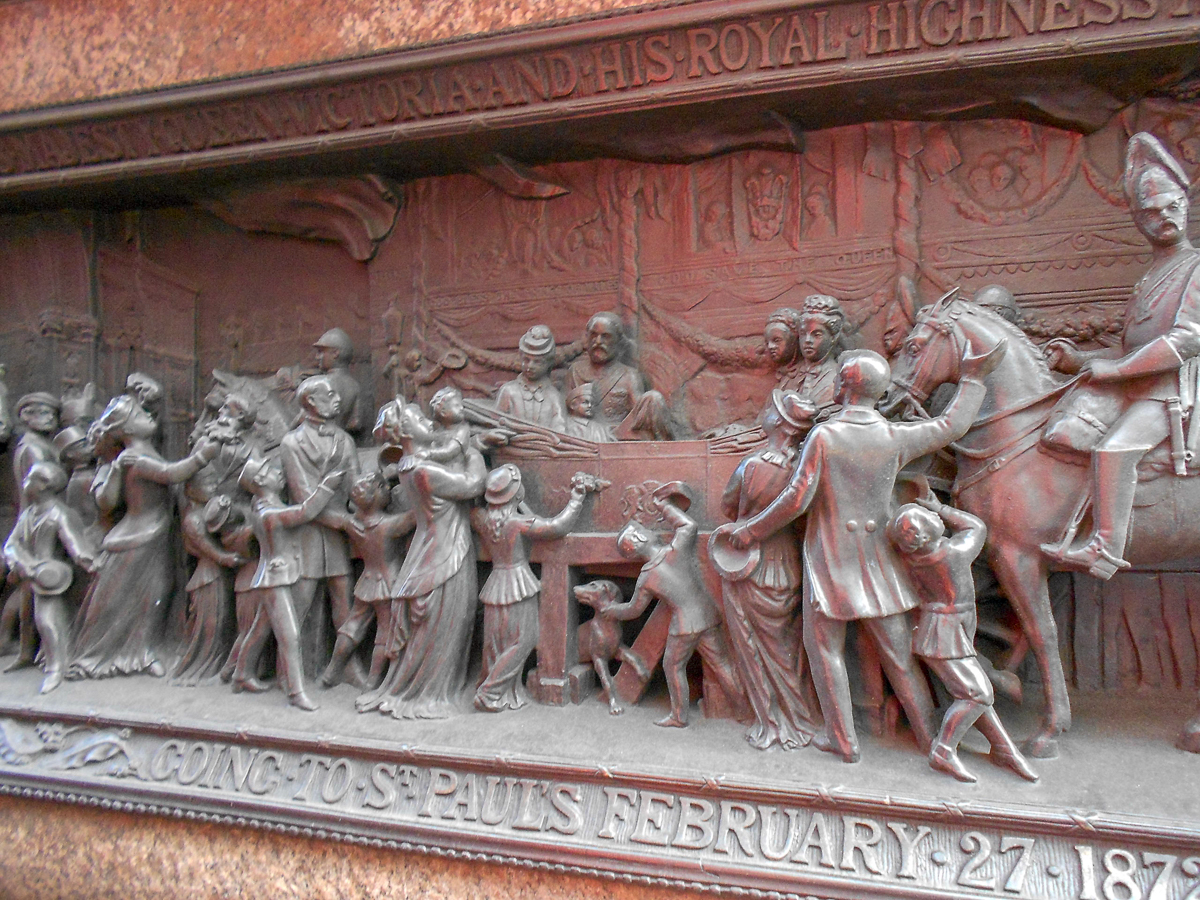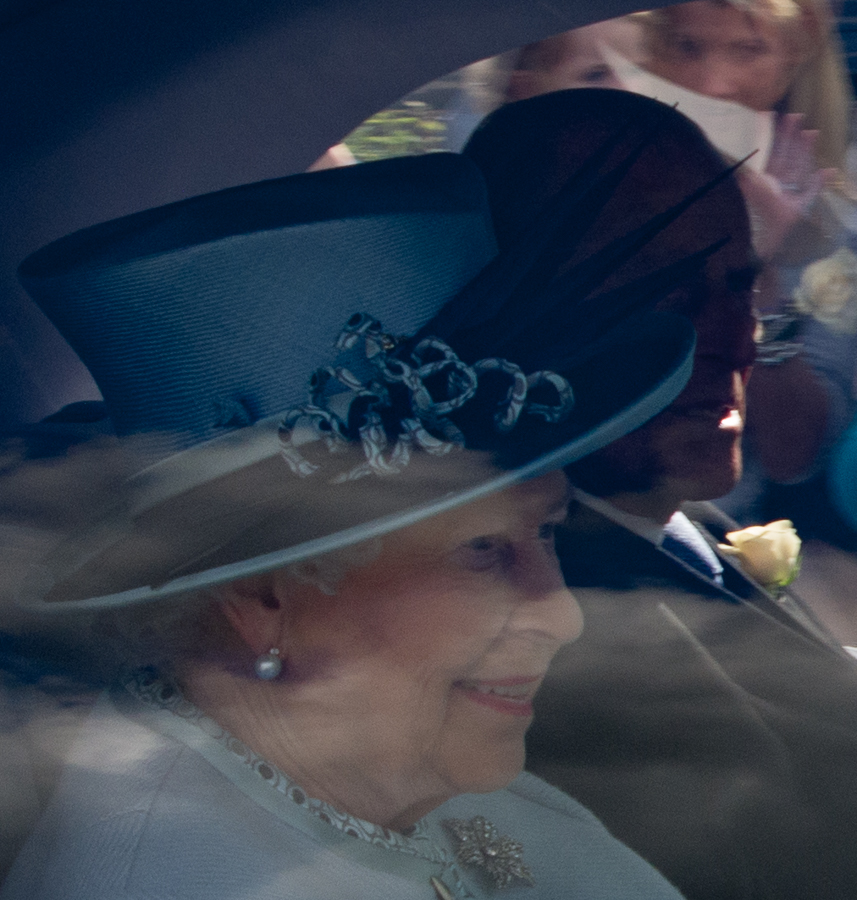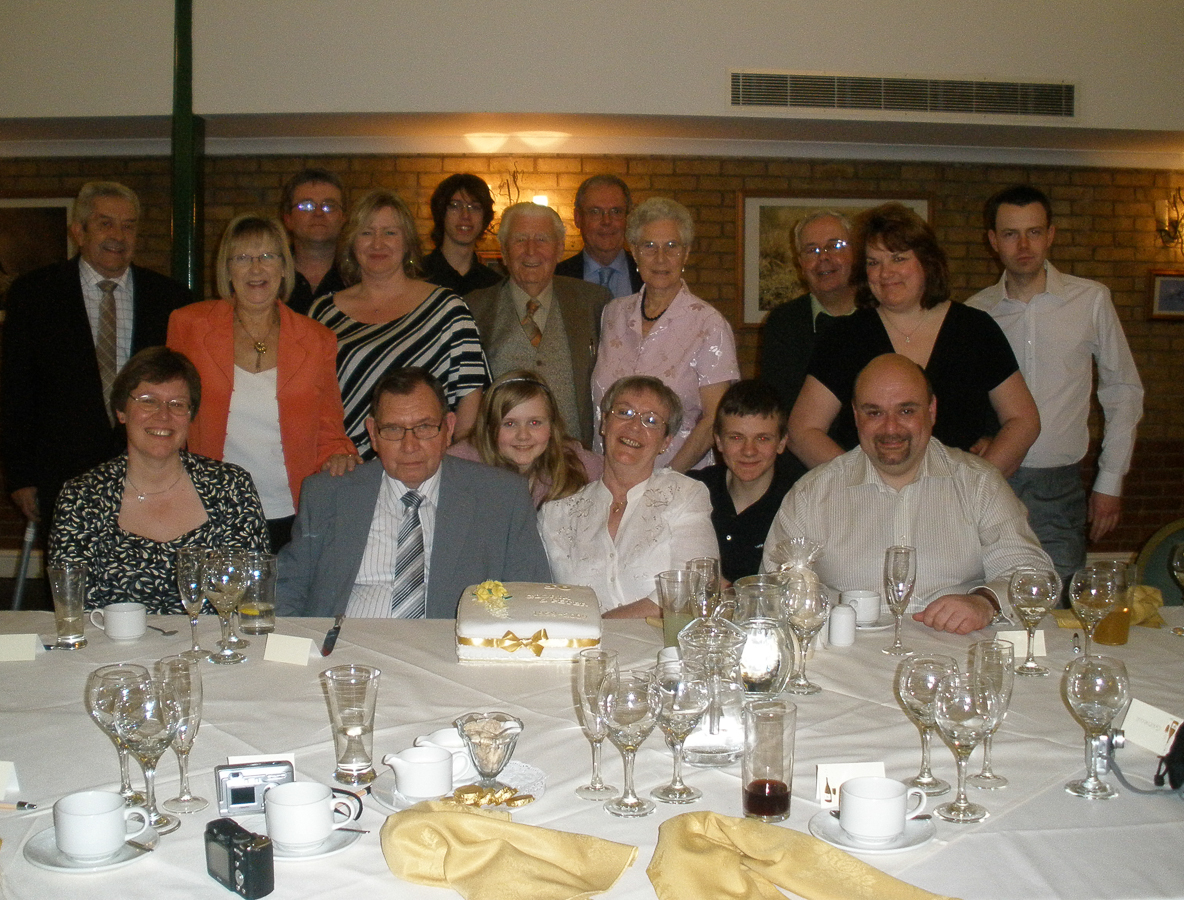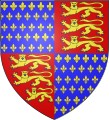Ludlow Castle
There is a lot of information about the history of Ludlow Castle on the internet.
Just a few links;
Walter de Lacy, a trusted member of the household of William fitzOsbern, arrived in England with the conquering army of William the Conqueror in 1066.
 FitzOsbern was rewarded for his loyal part in William’s victory with an Earldom over the lands of Hereford. After three years of local resistance, FitzOsbern was able to claim his Earldom and planned to keep his new acquisition secure by developing a string of castles along the border of England and Wales.
FitzOsbern was rewarded for his loyal part in William’s victory with an Earldom over the lands of Hereford. After three years of local resistance, FitzOsbern was able to claim his Earldom and planned to keep his new acquisition secure by developing a string of castles along the border of England and Wales.
Walter de Lacy was granted the manor of Stanton, which contained the site of present day Ludlow. Walter’s sons, first Roger and then Hugh, built the earliest surviving parts of the Castle that can still be seen today, and the de Lacy family retained the lordship until the end of the 13th century.
Ludlow Castle’s story began shortly after the Norman conquest. William FitzOsbern arrived in England during the Norman conquest and became Earl of Hereford. William quickly set about securing the Welsh border with a number of fortifications. Walter de Lacy was a trusted member of the FitzOsbern household and was granted various estates. In around 1086, Walter’s son, Roger de Lacy set about building Ludlow Castle (originally named Dinham Castle). The castle stood in the heart of the new estates and had a strong strategic advantage being above the river Teme on a flat topped ridge with steep rocky sides.
The castle was completed by 1115 and consisted of a stone ringwork with four towers, a gatehouse and a ditch on two sides dug out of rock. The rock that was excavated when creating the ditches was used for building the castle and thus making Ludlow castle likely the first stone castle in England.
Lets start before the castle was built at around the time of the Norman Conquest.
The fist century of Ludlow Castle were tumultuous times. With family feuds and fighting, and I don't just mean over the dinner table, or even, "let's take this outside". No this was with army against army. Not just at de Lacy level, but also with the Kings of the day.
Siege, confiscation, return and confiscation again. Changing hands through marriage. All going on.
Twenty changes of hand in the first 125 years of existence, but only 13 different people. All this while Ludlow Castle was getting bigger and had a prominent role in the security of England.

Relationships to me
A note about the relationships to me. They are subject to change as more people are added to the tree and different routes between relations appear. The relationships as as shown in my Ancestry Family Tree.
An example of this follows;-
James of Savoy Lord of Piedmont, built in tree form new to old, and then James of Savoy-Achaea Lord of Piedmont, built from old toward new. I don't always spot the overlaps but this time I did, and joined the two branches together.
Before the branches join
James of Savoy Lord of Piedmont
1315–1367
BIRTH JAN 1315
DEATH MAY 1367
paternal grandfather of wife of husband of 8th cousin 20x removed
James of Savoy-Achaea Lord of Piedmont
1315–1367
BIRTH JAN 1315
DEATH MAY 1367
1st cousin 3x removed of husband of grandaunt of husband of 14th cousin 20x removed
Thomas II of Savoy Lord of Piedmont, Count of Flanders
1199–1259
BIRTH ABT. 1199
DEATH 7 FEBRUARY 1259
paternal 1st cousin of husband of grandaunt of husband of 14th cousin 20x removed
Walter de Lacy Lord of Meath
1172–1241
BIRTH ABT. 1172
DEATH 1241
father-in-law of great-grandmother of husband of 14th cousin 20x removed
After the branches join
James of Savoy-Achaea Lord of Piedmont
1315–1367
BIRTH JAN 1315
DEATH MAY 1367
paternal grandfather of wife of husband of 8th cousin 20x removed
Thomas II of Savoy Lord of Piedmont, Count of Flanders
1199–1259
BIRTH ABT. 1199
DEATH 7 FEBRUARY 1259
3rd great-grandfather of wife of husband of 8th cousin 20x removed
Walter de Lacy Lord of Meath
1172–1241
BIRTH ABT. 1172
DEATH 1241
father-in-law of great-grandmother of husband of 14th cousin 20x removed
The original branch, new to old, appears to be more direct, and therefore the links are recalculated. Some other links also change, but not all, as demonstrated above.
 Ludlow Castle from the tower, view from the roof of the inner bailey, stitched panorama of several of my photos
Ludlow Castle from the tower, view from the roof of the inner bailey, stitched panorama of several of my photos
Click the image to open a larger version in SmugMug
On to the timeline of Ludlow Castle
| Time Line | Name | Title | Birth and death | Lands | Relationship to me according to my Ancestry Family Tree | Relationship to previous owner | Notes |
| Hugh de Laci | Lord of Lassy (Normandy) | Step 5th great-grandfather of paternal grandmother of husband of 14th cousin 20x removed | |||||
| Walter de Lacy | Lord of Weobley and Ludlow | d. 27 March 1085 |
Granted the lordship of Weobley in Herefordshire after the Conquest. He held blocks of land in Herefordshire (including Holme Lacy) and another group of lands centered on Ludlow in Shropshire. He also had smaller holdings in Berkshire, Gloucestershire, Worcestershire and Oxfordshire. |
Step 4th great-grandfather of paternal grandmother of husband of 14th cousin 20x removed | Son of Hugh de Laci |
Brothers Ilbert and Walter de Lacy jointly held the Norman lands of the Bishop of Bayeux. He held blocks of land in Herefordshire (including Holme Lacy) along the border with Wales with another group of lands centered on Ludlow in Shropshire. These groupings allowed Walter to help defend the England–Wales border against Welsh raids. He also had smaller holdings in Berkshire, Gloucestershire, Worcestershire and Oxfordshire. Walter was second in the region only to William FitzOsbern, 1st Earl of Hereford and his son, Roger de Breteuil although he was not subordinate to them. After the latter's rebellion against the king in 1075 (which Walter de Lacy helped to ensure failed) Walter became the leading baron in the region. |
|
| Ilbert de Laci | 1st Baron of Pontefract | Vast grants of land in West Yorkshire. The Honour of Pontefract, included the manor of Stanbury, | 3rd great-granduncle of husband of great-grandmother of husband of 14th cousin 20x removed | Son of Hugh de Laci | Ilbert was a major participant in the Harrying of the North (1069–70) which effectively ended the quasi-independence of the region through large-scale destruction that resulted in the relative "pacification" of the local population and the replacement of local Anglo-Danish lords with Normans. In return, he received vast grants of land in West Yorkshire, where he built Pontefract Castle. | ||
| From built to 1095 | Roger de Lacy | a Marcher Lord | d. after 1106 | From his father he inherited Castle Frome, Herefordshire. The Domesday Survey (1086) shows Roger holding also Ocle Pychard, Almeley Castle,Eardisley Castle, Icomb Place and Edgeworth Manor. He had an insecure lordship at Ewias Lacy now known as Longtown Castle on the modern day Welsh border, in Longtown, Herefordshire; Stanton Lacy was probably also his after Walter. His main stronghold was Weobley. He held directly from the King. De Lacy also held 1.5 salthouses in Droitwich. | Step 3rd great-grandfather of paternal grandmother of husband of 14th cousin 20x removed | Son and heir of Walter de Lacy |
Roger was a castle builder, particularly at Ludlow where he built Ludlow Castle.He took part in the rebellion of 1088 against William Rufus, with the other local lords Osbern fitzRichard of Richard's Castle, Ralf of Mortemer, and Bernard of Neufmarche. He was later implicated in the conspiracy of 1095 against William, and was exiled. |
| 1095 to his death about 1115 | Hugh de Lacy | d. before 1115 | Weobley and his other lands passed from Roger de Lacy when he was exiled, to his brother Hugh de Lacy | 2nd great-granduncle of husband of great-grandmother of husband of 14th cousin 20x removed | Brother of Roger de Lacy | ||
| about 1115 to her marriage | Sybil de Lacy | Weobley and his other lands passed from Hugh de Lacy on his death, before 1115, to his daughter (or niece) Sybil de Lacy |
1st cousin 3x removed of husband of great-grandmother of husband of 14th cousin 20x removed After adding William the Conqueror's daughter Adela's marriage to King Stephen's father 1st cousin 3x removed of husband of great-grandmother of husband of 14th cousin 20x removed |
There are three hypothesis for Sybil's parentage but currently I am working on her being the daughter of Hugh de Lacy |
Historians disagree about Sybil's parentage. One theory, given in the entry for her first husband in the Oxford Dictionary of National Biography states that Sybil was the niece of Hugh de Lacy. Another theory, coming from the Complete Peerage, states that Sybil was the daughter of Geoffrey Talbot and Talbot's wife Agnes, who was probably the daughter of Walter de Lacy, Hugh's father. Yet another theory, put forth by historian Katharine Keats-Rohan, states Sybil was the daughter of Hugh de Lacy. |
||
| to his death in 1137 | Pain fitzJohn | b. before 1100 – d. 10 July 1137 | Husband of Sybil de Lacy | ||||
| 1137 to 1139 | Sybil fitzJohn nee de Lacy | When Pain fitzJohn died Sybil claimed to retain lands that were previously her inheritance form Hugh de Lacy | Widow of Pain fitzJohn | ||||
| Stephen of Blois, King of England from 22 December 1135 to his death in 1154. |
b. 1092 or 1096 – 25 October 1154 King of England from 22 December 1135 to his death in 1154 |
Sybil retained control of Ludlow Castle until the middle of 1139, when she was forced to surrender it to King Stephen after a siege. King Stephen then married Sybil to Josce de Dinan. |
1st cousin 28x removed | Stephen of Blois Count of Boulogne, Duke of Normandy, King of England | |||
| from his marriage to Sybil until handed over to Gilbert de Lacy | Josce de Dinan | d. 1166 | Lands as his wife Sybil nee de Lacy | Second Husband of Sybil de Lacy |
Dinan thus acquired control of Ludlow Castle in right of his wife, setting up the background to Gilbert de Lacy's attempts to seize Ludlow from Dinan. Josce, however, rebelled against Stephen and fortified Ludlow against the king. Josce died in 1166. |
||
| Presumably Cecily inherited following Josce death in1166 then immediately transferred to her husband under the marriage settlement | Cecily fitzJohn | Daughter of Sybil de Lacy and Pain fitzJohn | Cecily. Her first husband was Roger, the son of Miles of Gloucester. Pain arranged Cecily and Roger's marriage. The marriage contract specified that Roger would inherit all of Pain's lands, but as result of the latter's death the marriage was not contracted until December 1137, when King Stephen confirmed the terms of the settlement. | ||||
| 1166 | Roger Fitzmiles 2nd Earl of Hereford | b. Before 1125 d. 1155 | The plan was for Roger to inherit Pain fitzJohn's lands but he died at the age of 30, having married Cecily fitzJohn at about 12 years of age. | Husband of Cecily fitzJohn from 1137. | |||
| Sometime between 22 December 1135 to King Stephen's death in 1154 | Gilbert de Lacy | d. After 1163 |
Although de Lacy recovered some of his father's lands, the border lands near Wales were not recovered. Among the lands Gilbert recovered were lands about Weobley. He also was granted some lands in Yorkshire that had been in dispute. Including Ludlow Castle which was about 20 miles NE of Weobley. |
step 2nd great-grandfather of paternal grandmother of husband of 14th cousin 20x removed |
Son of Roger de Lacy |
Gilbert's father forfeited his English lands in 1096, and Gilbert initially only inherited the lands in Normandy. The Gilbert de Lacy spent much time trying to recover his father's English lands, and eventually succeeded. Around 1158 de Lacy surrendered his lands to his eldest son Robert when the elder de Lacy became a member of the Knights Templar. He then travelled through France to Jerusalem, where de Lacy became precentor of the Templars in the County of Tripoli. In 1163, de Lacy was one of the crusader army commanders fighting against Nur ad-Din. He was appointed by Godfrey Martel and Hugh of Lusignan as field commander for the Battle of al-Buqaia. |
|
| Around 1158 until his death before 1162. | Robert de Lacy | b Before 1134 d before 1162. He predeceased his father | granduncle of husband of great-grandmother of husband of 14th cousin 20x removed | First Son of Gilbert de Lacy | |||
| From Robert's death before 1162, to 1186 | Hugh de Lacy | Lord of Meath, 4th Baron Lacy | b. before 1135 d. 25 July 1186 |
Ewyas Lacy, Weobley, and Ludlow. Inherited from his father Gilbert de Lacy, via his brother, Robert de Lacy. Latterly, in Ireland, Meath, Offaly, Kildare, and Wicklow. Trim Castle, Meath |
paternal grandfather of husband of great-grandmother of husband of 14th cousin 20x removed | Second Son of Gilbert de Lacy |
Following his participation in the Norman Invasion of Ireland, he was granted, in 1172, the lands of the Kingdom of Meath by the Anglo-Norman King Henry II, but he had to gain control of them. The Lordship of Meath was then the most extensive liberty in Ireland. Lacy was sent back to Ireland as procurator-general in 1177, soon after the death of Richard de Clare. The grant of Meath to Lacy was now confirmed, with the additions of Offaly, Kildare, and Wicklow. |
| Richard I | Richard I Plantagenet King of England, Duke of Normandy, Aquitaine, and Gascony; Lord of Cyprus; Count of Poitiers, Anjou, Maine, and Nantes | b. 8 September 1157 d. 6 April 1199 | Extensive including Ludlow Castle | 1st cousin 27x removed | |||
| Walter de Lacy | Lord of Meath | b. about 1172 d. 1241 | father-in-law of great-grandmother of husband of 14th cousin 20x removed | First Son of Hugh de Lacy | |||
| 1202 to before 1207 | William de Braose | 4th Lord of Bramber | b. 1144/1153 d. 9 August 1211 | Properties, including Ludlow Castle | maternal grandfather of husband of great-grandmother of husband of 14th cousin 20x removed | Father in Law of Walter de Lacy | Walter de Lacy travelled to Ireland in 1201 and the following year his properties, including Ludlow Castle, were once again confiscated to ensure his loyalty and placed under the control of William de Braose, his father-in-law. |
| Sometime between 1202 and 1207 to 1207 | Walter de Lacy | Lord of Meath | b. about 1172 d. 1241 | father-in-law of great-grandmother of husband of 14th cousin 20x removed | First Son of Hugh de Lacy | Walter's lands were returned to him, subject to the payment of a fine of 400 marks | |
| 1207 to 1208 | William de Braose | 4th Lord of Bramber | b. 1144/1153 d. 9 August 1211 | maternal grandfather of husband of great-grandmother of husband of 14th cousin 20x removed | Father in Law of Walter de Lacy | In 1207 his disagreements with royal officials in Ireland led to King John seizing the castle and putting it under the control of William again | |
| 1208 to 1208 | Walter de Lacy | Lord of Meath | b. about 1172 d. 1241 | father-in-law of great-grandmother of husband of 14th cousin 20x removed | First Son of Hugh de Lacy | Walter reconciled himself with John the following year, but meanwhile William himself had fallen out with the King; violence broke out and both Walter and William took refuge in Ireland, with John taking control of Ludlow yet again | |
| 1208 to 1215 | King John | John King of England | b. 24 December 1166 d. 19 October 1216 | 1st cousin 27x removed | It was not until 1215 that their relationship recovered and John agreed to give Ludlow back to Walter. | ||
| 1215 | Walter de Lacy | Lord of Meath | b. about 1172 d. 1241 | father-in-law of great-grandmother of husband of 14th cousin 20x removed | First Son of Hugh de Lacy | ||
| 1223 to 1225 | King Henry III of England | King of England, Lord of Ireland, and Duke of Aquitaine | b. 1 October 1207 d. 16 November 1272 | 2nd cousin 26x removed | In 1223 Henry became suspicious of Walter's activities in Ireland and, among other measures to secure his loyalty, Ludlow Castle was taken over by the Crown for a period of two years. | ||
| 1225 to 1238 | Walter de Lacy | Lord of Meath | b. about 1172 d. 1241 | father-in-law of great-grandmother of husband of 14th cousin 20x removed | First Son of Hugh de Lacy | The two year Crown forfeiture was cut short in May 1225 when Walter carried out a campaign against Henry's enemies in Ireland and paid the King 3,000 marks for the return of his castles and lands. | |
| 1238 to about 1240 | King Henry III of England | King of England, Lord of Ireland, and Duke of Aquitaine | b. 1 October 1207 d. 16 November 1272 | 2nd cousin 26x removed | Walter de Lacy accumulated huge debts to the King and other moneylenders, consequentially, in 1238 he gave Ludlow Castle as collateral to the King, although the fortification was returned to him sometime before his death in 1241 | ||
| Walter de Lacy | Lord of Meath | b. about 1172 d. 1241 | father-in-law of great-grandmother of husband of 14th cousin 20x removed | First Son of Hugh de Lacy | All of Walter de Lacy's children had predeceased him at the time of his death in 1241, at the ripe old age of 69, or thereabouts, which was good for the time, and somewhat amazing considering the things he was involved in. So his inheritance was to go to grandchildren, children of his only Son, Gilbert de Lacy and Gilbert's wife, Isabel le Bigod.. Of which there were three Maud and Margaret surviving, and Walter, predeceased (presumably). | ||
| Maud de Lacy, sometimes known as Matilda de Lacy. | Baroness Geneville | b. 1230 d. 11 April 1304 |
Inherited half Walter de Lacy d.1241 estate. Co-heiress to vast estates and lordships in Ireland, Herefordshire, and the Welsh Marches Including Trim and Ludlow Castles, and Ewyas Lacy. |
grandaunt of husband of 14th cousin 20x removed | Walter's granddaughters Maud and Margaret were due to inherit Walter's remaining estates on his death, but they were still unmarried, making it hard for them to hold property in their own right. Henry informally divided the lands up between them, giving Ludlow to Maud and marrying her to one of his royal favourites, Peter de Geneva, cancelling many of the debts they had inherited from Walter at the same time. Peter died in 1249 and Maud married a second time, this time to Geoffrey de Geneville, a friend of the Prince Edward, the future king | ||
| Peter de Geneva or Pierre de Genève | Lord of Ludlow, Constable of Windsor Castle | d. 1249 | husband of grandaunt of husband of 14th cousin 20x removed | Husband of Maud de Lacy, granddaughter of Walter de Lacy |
Humbert de Genève, had been the Count until 1220, but when he died the county did not pass to his sons Pierre and Ebal but to Humbert's younger brother Guillaume de Genève. It has been suggested that either Peter II, Count of Savoy arranged for Pierre and Ebal to find preferment in England in return for their rights on the north shore of Lake Geneva or more generously that he befriended them and offered them a life in England as a good uncle to nephews in need – either way they arrived in England between 1240 and 1241 and feature in English records in the early 1240s. Once in England they joined Peter’s staff; he was able to find Pierre de Genève a good marriage match, Maude de Lacy, youngest daughter of Gilbert de Lacy, who claimed descent from the great William Marshal. The family held the castle in the Welsh Marches at Ludlow, and for a time Pierre became Lord of Ludlow through Maude before succeeding Bernard de Savoie, becoming a Constable of Windsor Castle itself, before dying in 1249. His English bride would find another Savoyard match in Geoffroi de Joinville (known in England as Geoffrey de Geneville) the brother of Saint Louis biographer and famed chronicler of the Crusades Jean de Joinville. His brother Ebal de Genève meanwhile found a good marriage match in Ireland, Christiana de Marais, the daughter of Robert de Marais (himself a son of John's Justiciar in Ireland who received large grants of land in Munster). |
||
| Geoffrey de Geneville |
Seigneur of Vaucouleurs in Champagne, 1st Baron Geneville, Justiciar of Ireland |
|
By marriage arranged by the King, Lordships in Ireland, Herefordshire, and the Welsh Marches Including Trim and Ludlow Castles, and Ewyas Lacy. |
husband of grandaunt of husband of 14th cousin 20x removed | Second husband of Maud de Lacy, granddaughter of Walter de Lacy | In 1260, King Henry officially split up Walter's estate, allowing Geoffrey to retain the castle. | |
| 1264 - 1265 | Simon de Montfort |
6th Earl of Leicester |
b. About 1208 d. 4 August 1265 |
Ludlow Castle following battle | husband of 2nd cousin 26x removed |
Henry lost control of power in the 1260s, resulting in the Second Barons' War across England. Following the Royalist defeat in 1264, the rebel leader Simon de Montfort seized Ludlow Castle, but it was recaptured shortly afterwards by Henry's supporters, probably led by Geoffrey de Geneville. After a rule of just over a year, Montfort was killed by forces loyal to the king in the Battle of Evesham. His actions in the Second Barons War and during his brief rule thereafter is why Simon de Montfort is regarded today as one of the progenitors of modern parliamentary democracy |
|
| 1265 - 1283 | Geoffrey de Geneville | Seigneur of Vaucouleurs in Champagne, 1st Baron Geneville, Justiciar of Ireland | b. About 1226 d. 21 October 1314 |
Lordships in Ireland, Herefordshire, and the Welsh Marches Including Trim and Ludlow Castles, and Ewyas Lacy. |
husband of grandaunt of husband of 14th cousin 20x removed | Second husband of Maud de Lacy, granddaughter of Walter de Lacy | |
| 1277 to 1284 | The Campaigns of Edward I in Wales: | ||||||
| 1283 - 1292 | Peter (Piers) de Geneville | 2nd Lord Geneville |
b. 1258 • Dublin, County Dublin, Ireland d. 8 June 1292 • Lusignan, Vienne, Poitou-Charentes, France
|
Son of Geoffrey de Geneville |
In 1283, he granted his English lands to his son Peter (Piers) and focused his attention on Ireland Geoffrey and Maud's oldest granddaughter, Joan, married Roger Mortimer in 1301, giving Mortimer control of Ludlow Castle. |
||
| 1292 - 1301 |
Joan de Geneville
|
2nd Baroness Geneville, Countess of March, Baroness Mortimer |
b. 2 February 1284 • Ludlow Castle, Ludlow, Shropshire, England d. 19 October 1356 • Kings Stanley, Gloucestershire, England |
Estates that included the town and castle of Ludlow, the lordship of Ewyas Lacy, the manors of Wolferlow, Stanton Lacy, and Mansell Lacy in Shropshire and Herefordshire as well as a sizeable portion of County Meath in Ireland. | 13th cousin 21x removed | daughter of Peter (Piers) de Geneville | |
| 1301 - 1330 |
Roger De Mortimer
|
3rd Baron Mortimer, 1st Earl of March |
b. 25 April 1287 • Wigmore Castle, Ludlow, Hertfordshire, England d. 29 November 1330 • Tyburn, London, England |
husband of 13th cousin 21x removed | husband of Joan de Geneville |
Joan married Roger Mortimer, eldest son of Edmund Mortimer, 2nd Baron Wigmore, and Margaret de Fiennes on 20 September 1301 at the manor of Pembridge. Marriage to Joan was highly beneficial to Mortimer as it brought him much influence and prestige in addition to the rich estates he gained through their matrimonial alliance. Three years later in 1304 he succeeded as Baron Mortimer, making Joan Baroness Mortimer. He was knighted on Whitsunday 22 May 1306 by King Edward I. He was condemned without trial and hanged at Tyburn on 29 November 1330, his vast estates forfeited to the crown. |
|
| 1330 | King Edward III |
Edward III of Winsor King of England, Lord of Ireland, Duke of Aquitane, Count of Ponthieu, Lord of Aquitane Plantagenet
|
b. 13 November 1312 • Windsor Castle, Berkshire, England d. 21 June 1377 • Shene Palace on-the-Thames, Richmond, Surrey, England. |
Estates forfeited to the crown. | 5th cousin 23x removed | ||
|
1330 - 1356 Until her death but presumably shared with her son and grandson |
Joan de Geneville | 2nd Baroness Geneville, Countess of March, Baroness Mortimer |
b. 2 February 1284 • Ludlow Castle, Ludlow, Shropshire, England d. 19 October 1356 • Kings Stanley, Gloucestershire, England |
Ludlow Presumably town and castle |
13th cousin 21x removed | daughter of Peter (Piers) de Geneville and widow of
Roger De Mortimer
|
Mortimer fell from power the following year and was executed but his widow Joan was permitted to retain Ludlow. |
| 1330 - 1331 |
Edmund de Mortimer |
Sir |
b. 1303 • Wigmore, Herefordshire, England d. 16 December 1331 • Stanton Lacy, Shropshire, England |
14th cousin 20x removed | Son of Joan de Geneville and Roger De Mortimer | ||
| 1331 - 1358 |
Roger de Mortimer
|
2nd Earl of March, 4th Baron Mortimer of Wigmore |
b. 11 November 1328 • Ludlow Castle, Shropshire, England d. 26 February 1360 |
15th cousin 19x removed | Son of Edmund de Mortimer | ||
| 1358 - 1381 |
Edmund de Mortimer
|
3rd Earl of March and Earl of Ulster |
b. 1 February 1352 d. 27 December 1381 |
16th cousin 18x removed | Son of Roger de Mortimer | Roger's young son, Edmund, inherited the castle in 1358, before his father's death, at the age of about 6. | |
| 1381 - 1398 |
Roger de Mortimer |
4th Earl of March, 6th Earl of Ulster. Lord Lieutenant of Ireland |
b. 11 April 1374 at Usk, Monmouthshire, Wales d. 1398 Kellistown, County Carlow, Ireland
|
8th cousin 20x removed | Son of Edmund de Mortimer |
Edmund's young son, Roger, inherited the castle in 1381, at his father's death, at the age of about 7. Edmund's son, another Roger, inherited the castle in 1381, but King Richard II took the opportunity of Roger's minority to exploit the Mortimer estates until they were put into the control of a committee of major nobles. When Roger died in 1398, Richard again took wardship of the castle on behalf of the young heir, Edmund, until he was deposed from power in 1399. Mortimer spent much time in Ireland; he served several tenures as Lord Lieutenant of Ireland and died during a battle at Kellistown, County Carlow. |
|
|
1398 - 1399
1413 - 1425 |
Edmund Mortimer
|
5th Earl of March, 7th Earl of Ulster, Edmund was heir-presumptive to the throne |
b. 6 November 1391 • New Forest, Westmeath, Ireland d. 18 January 1425 |
8th cousin 20x removed | Son of Roger de Mortimer |
Inherited at his fathers death, at the young age of about 7 years.
Edmund Mortimer was thus a descendant of Henry III and Edward I and a half-grandnephew of Richard II through his mother, and more importantly a descendant of King Edward III through his paternal grandmother Philippa of Clarence, only child of King Edward III's second surviving son, Lionel of Antwerp, Duke of Clarence. Because King Richard II had no issue, Edmund's father, Roger Mortimer, 4th Earl of March, was heir presumptive during his lifetime, and at his death in Ireland on 20 July 1398 his place in the succession fell to his eldest son, Edmund. Thus in terms of male primogeniture Edmund was heir-presumptive to the throne over and above the house of Lancaster, the children of Edward III's third son John of Gaunt, Duke of Lancaster. However, on 30 September 1399, when Edmund Mortimer was not yet eight years of age, his fortunes changed entirely. Richard II was deposed by Henry Bolingbroke, the new Duke of Lancaster, who became King Henry IV and had his own son, the future King Henry V, recognized as heir apparent at his first Parliament. The King put the young Edmund and his brother Roger in the custody of Sir Hugh Waterton at Windsor and Berkhamsted castles, but they were treated honourably, and for part of the time brought up with the King's own children, John and Philippa. On his accession in 1413 Henry V set Edmund Mortimer at liberty, and on 8 April 1413, the day before the new King's coronation, Edmund Mortimer and his brother Roger were made Knights of the Bath. On 9 June 1413, the King granted Edmund Mortimer livery of his estates. Henry IV's Queen, Joan of Navarre, had been granted authority over Edmund's marriage on 24 February 1408, but she later ceded this to Henry while Prince of Wales. On 17 January 1415 Edmund obtained a papal dispensation to marry 'a fit woman' related to him in the third degree of kindred or affinity. This allowed him to marry his second cousin once removed, Anne Stafford, the daughter of Anne of Gloucester and Edmund Stafford, 5th Earl of Stafford. Like Mortimer, she was a descendant of Edward III. The King was displeased, and imposed an enormous fine of 10,000 marks. Despite the surrounding town having become prosperous in the wool and cloth trades. Edmund fell heavily into debt and having sold his rights to his Welsh estates to a consortium of nobles, before dying childless in 1425 |
|
| 1432 - 1459 |
Richard of York |
Richard of York House of Plantagenet, 3rd Duke of York, 6th Earl of March |
b. 21 September 1411 d. 30 December 1460 |
Ludlow and Ludlow Castle (in residence) | 9th cousin 19x removed |
The son of Anne of Cambridge, nee Mortimer, who was the sister of Edmund Mortimer, who died without issue. |
The castle was inherited by Edmund's sister's young son, Richard the Duke of York, who took possession in 1432. Richard took a keen interest in the castle, which formed the administrative base for his estates around the region, possibly living there in the late 1440s and definitely residing there for much of the 1450s. Once he inherited the vast Mortimer estates, he also became the wealthiest and most powerful noble in England, second only to the king himself. |
| 1459 - 1461 | Edmund de la Mare was placed in charge of the castle as constable, with John Talbot, the Earl of Shrewsbury, being given the wider lordship | The Wars of the Roses broke out between the Lancastrian and Richard's Yorkist factions in the 1450s. Ludlow Castle did not find itself in the front-line of most of the conflict, instead acting as a safe retreat away from the main fighting.[62] An exception to this was the Battle of Ludford Bridge which took place just outside the town of Ludlow in 1459, resulting in a largely bloodless victory for the Lancastrian Henry VI. After the battle, in a bid to break Richard's power over the region, Edmund de la Mare was placed in charge of the castle as constable, with John Talbot, the Earl of Shrewsbury, being given the wider lordship. Richard was killed in battle in 1460, and his son Edward seized the throne the following year, retaking control of Ludlow Castle and merging it with the property of the Crown. | |||||
| 1461 - 1483 |
King Edward IV
|
4th Duke of York, 7th Earl of March, King of England |
b. 28 April 1442 • Rouen, Seine-Maritime, Haute-Normandie, France d. 9 April 1483 |
Property of the Crown | 10th cousin 18x removed | Son of Richard of York | The new Edward IV visited the castle regularly and established a council there to govern his estates in Wales. |
| 1483 - 1483 |
King Edward V
|
of York of England King of England |
b. 2 November 1470 d. About 1483 |
Property of the Crown | 11th cousin 17x removed | Son of King Edward IV | In 1473, possibly influenced by his own childhood experiences at Ludlow, Edward sent his eldest son, the future Edward V, and his brother Prince Richard to live at the castle, which was also made the seat of the newly created Council in the Marches of Wales. By now Ludlow had become primarily residential. |
| 1483 - 1485 | King Richard III |
Richard III of York , Duke of Gloucester, KG, King of England and France and Lord of Ireland |
b. 2 October 1452 • Fotheringhay Castle, Northamptonshire, England d. 22 August 1485 • Battle of Bosworth, Market Bosworth, Leicestershire, England |
Property of the Crown | 10th cousin 18x removed | Son of King Edward IV and brother of King Edward V | |
| 1485 - |
Henry VII
|
Tudor King of England and Lord of Ireland |
b. 28 January 1457 • Pembroke Castle, Pembrokeshire, Wales d. 21 April 1509 • Richmond Palace, Richmond, Surrey, England |
Property of the Crown | husband of 11th cousin 17x removed | Indirect | Edward died in 1483, but after Henry VII took the throne in 1485 he continued to use Ludlow Castle as a regional base, granting it to his son, Prince Arthur, in 1493, and reestablishing the dormant Council in the Marches at the property. |
| 1536 to 1543 | The Act of Union with Wales came about between the years 1536 and 1543 as a result of a series of laws passed in the English Parliament1. Wales had been under the control of the English Kings since the conquests of Edward I and had been ruled as a principality. England had absorbed Wales and Cornwall by 1543, through parliamentary incorporation, political and cultural integration of the ruling elites, and administrative cohesion across church and state. | ||||||
 Ludlow Castle from the tower, the view from the roof across the outer court to the town and countryside, stitched panorama of several of my photos
Ludlow Castle from the tower, the view from the roof across the outer court to the town and countryside, stitched panorama of several of my photos
Click the image to open a larger version in SmugMug

